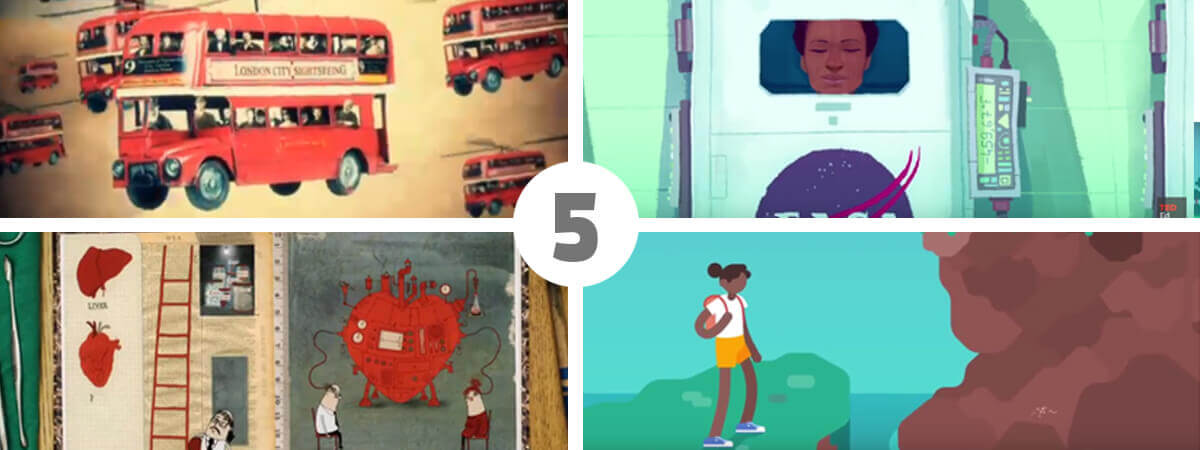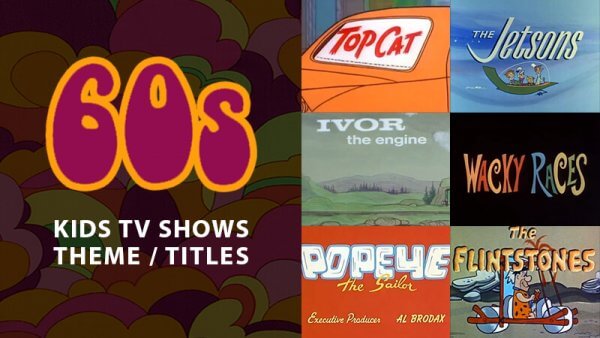As more and more educational institutions turn to animation as a way of sharing their knowledge and inspiring the next generation, we thought we’d put together 5 of our all time favourite animated explainer films, along with a few reasons why we think they’re so great.
1. Things You Need To Know
Things You Need To Know uses a surreal sense of humour and a collage style of animation to explore ideas, facts and expert opinions on a given subject.
The films are structured around an everyday question that the audience is likely to have already pondered, such as ‘Why do cats have 9 lives?’, or ‘Why does ice cream hurt my head?’. This human-centric approach helps the audience relate to the subject and understand how it directly affects them, while appealing to their thirst for knowledge and pub quiz style trivia.
Another thing they do well is to use everyday objects and events as points of reference, to make more abstract concepts understandable to the audience at home.
Visually and tonally, these films suit the requirements of the KS4 and 5 audience more than the younger students. These age groups can feel patronised when presented with anthropomorphized objects or animals, but this almost ‘Python-esque’ use of bizarre analogies and unexpectedly whimsical imagery creates a platform to explain the science in a way that is entertaining, memorable and informative.
2. Should we look for life elsewhere in the Universe?
Should we be looking for life elsewhere in the Universe? is a Ted Talk by Aomawa Shields that covers not only science, but also philosophy and ethics – forcing the audience to engage and debate with the arguments presented.
This film uses an appealing character, who is given enough screen time to establish a personality and make the audience care about it, and beautiful, colourful artwork that help to inspire a sense of wonder and majesty at the Universe. There are additional background elements that add to the humour, and keep the audience engaged throughout, without distracting from each scene’s learning objective.
On top of all this, the science is presented in a clean and simple way, that will connect with and reinforce what the students already know and are learning at school.
3. Dara O’Briain’s Science Club
Dara O’Briain’s Science Club aimed to reignite an adult audience’s appreciation and understanding of science, and did so by presenting the human side to scientific discoveries – much like Bill Bryson did in his hugely popular book; ‘A Short History of Nearly Everything’.
Their focus on using the story and impact of the discovery as a platform to explain the science creates films that are entertaining, memorable and informative.
They inject the various subjects with a whimsical sense of humour through O’Briain’s enthusiastic narration, human centric stories, inventive visuals and great comic timing. This keeps the audience invested from beginning to end, and meanwhile the films are able to explain, clearly and precisely, how the science works, why it matters, and how it affects them.
4. Kurzgesagt
‘Kurzgesagt’ (meaning ‘in a nutshell’) explain the answers to some of life’s biggest, most unanswerable questions in a concise yet thorough way.
What Kurzgesagt does particularly well is to structure their films around a question, such as ‘what happened before history?’, ‘Where are all the aliens?’ or ‘What if there was a black hole in your pocket?’. This puts the audience, rather than any characters, at the centre of the film, which helps them relate to the subject and understand how it affects them.
They use a clean and precise ‘infographic’ style of animation, which removes any extraneous details and focuses on exactly the information that the audience needs to understand at each point. This works well for an audience that has specifically chosen to watch the film, and helps Kurzgesagt demystify complicated ideas.
In all these examples, the infectious passion, enthusiasm and detailed research of the filmmakers shines through and lights up each topic for the audience.
5. Where does Space Begin?
But of course, we promised you 5 and have only delivered 4, so here is one of our own recent series of films for the Royal Observatory Greenwich, “Where does Space Begin” aimed at the GCSE (15-16 year old) audience.
Check out more from this series here!
And if you want to learn more about how we design animated educational content for different ages, check out our recent blog post!


